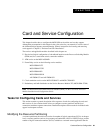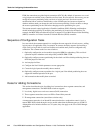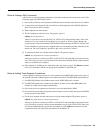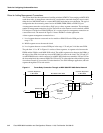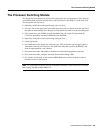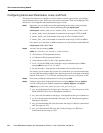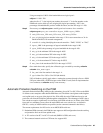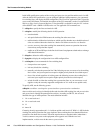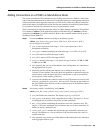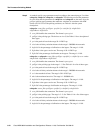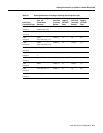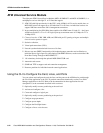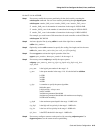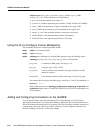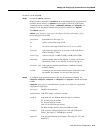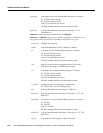
CHAPTER
Card and Service Configuration 6-1
6
Card and Service Configuration
This chapter describes how to configure the MGX 8850 cards and the services they support.
Although the presumption for this chapter is that a plan exists for your network, it reviews some of
the information that supports network planning. Generic instructions for inserting and removing
cards appear in “Chapter 4, “Enclosure and Card Installation.”
The services and applicable modules described in this chapter are:
• Physical and logical configuration of a broadband interface on the Processor Switching Module
(PXM) and, for a stand-alone switch, connection addition
• ATM service on the MGX-AUSM/B
• Frame Relay service on the following service modules:
MGX-FRSM-2CT3
MGX-FRSM-2T3E3
MGX-FRSM-HS2
MGX-FRSM-HS1/B
AX-FRSM-8T1 and AX-FRSM-8E1
• Circuit emulation service on the MGX-CESM-8T1 and MGX-CESM-8E1
• Redundancy and bulk distribution on the Service Resource Module-3T3 (MGX-SRM-3T3/B)
Note For information on the Route Processor Module (RPM), see the Cisco Route Processor
Module Installation and Configuration Guide.
Tasks for Configuring Cards and Services
This section contains a general description of the sequence of tasks for configuring the cards and
their services. It also contains details on how to configure resource partitions and add local
connections and three-segment connections. Detailed descriptions of these tasks for individual cards
appear in subsequent sections.
Modifying the Resource Partitioning
A resource partition at the card level consists of a number of logical connections (LCNs). At the port
level, a resource partition consists of a percentage of bandwidth, a DLCI or VPI/VCI range, and the
number of logical connection numbers (LCNs) available to a network control application. On the



